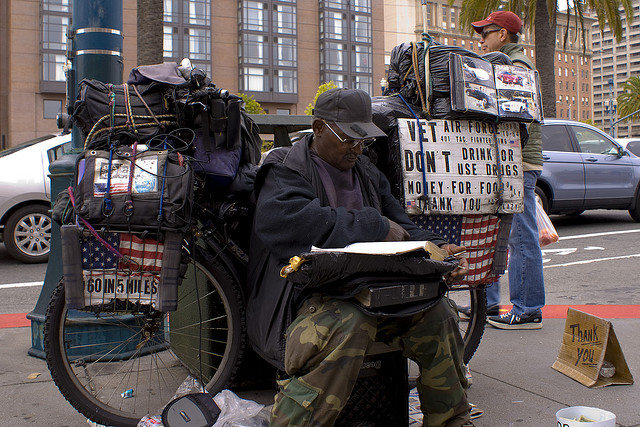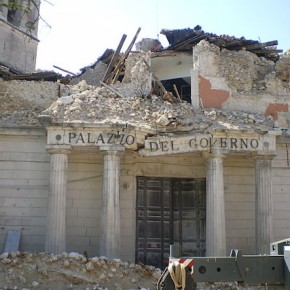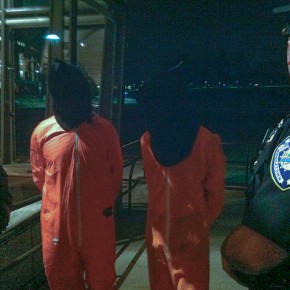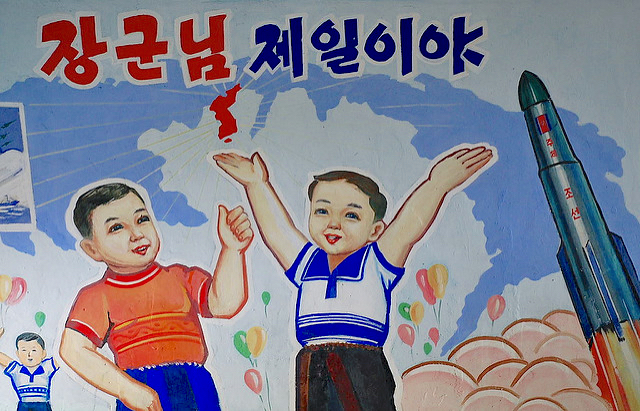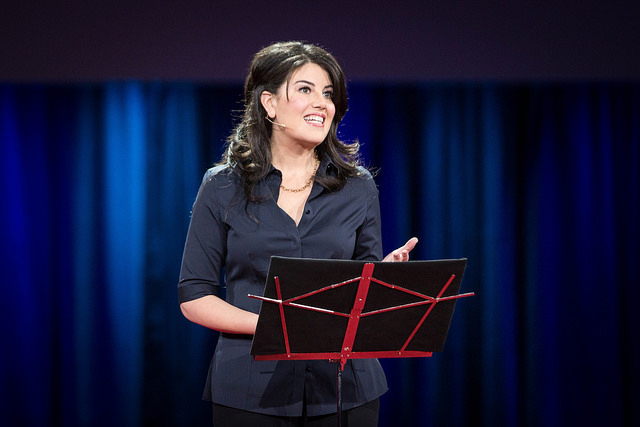“Here, Mariah, let’s pull over.” The whir of wheels behind me stopped, and I turned once more to see Maggie Campbell of the Santa Barbara Downtown Organization striking an authoritative pose. A feat, mind you, when one is helmeted and perched on a Segway in the thick of the midday downtown rush.
A young consultant from L.A. performed a pirouette and nearly crashed his vehicle into a nearby palm tree. Maggie’s back was toward me as she addressed a collection of representatives from a downtown group based out of Hollywood, about an hour and a half south. These commercial groups, comprised of merchants, businesspeople, and consultants “dedicated to the promotion and enhancement of the business, cultural, community and environmental vitality” of downtown areas, had converged on Santa Barbara’s historic State Street to share development ideas. I’d been tasked as Segway escort on this private tour, but I fancied myself a spy.
We’d pulled over in front of Habit Burger, a local fast food joint that had recently gone public on the stock exchange. On the sidewalk outside the dining patio was a brick bench fenced off with ugly chain link. “Now who in their right mind would think to put a bench here, where people are trying to eat?” She paused for a smug chuckle from her guests. “Homeless people used to congregate on this bench, and from here they got to look down on everyone else.” Puffing out her chest and lowering her voice, she continued, “This bench allowed the homeless to be the kings of State Street. So we put up this fence!” She seemed pleased with herself.
Throughout our tour, Maggie and her guests had discussed lots of challenges and solutions intended to revitalize downtown communities — widening the sidewalks, choosing drought-resistant plants to line the streets — but it was clear that one issue was paramount: homelessness.
In cities across America, homelessness is on the rise as income inequality deepens, gentrification surges, and social welfare programs are slashed in the name of fiscal responsibility. There’s no question that homelessness should be a primary concern for municipalities coast to coast. But hearing Maggie speak of the homeless with such disdain communicated very clearly that the Downtown Organization’s aims in addressing homelessness were aesthetic rather than humanitarian. The questions that concerned them were all about implementing simple policies designed to make downtown areas less usable for and accessible to the homeless: “How can we streamline parks so that they provide less shelter? How can we design trash cans so that it’s impossible to retrieve scraps of food from them? How can we make benches less comfortable, and how can we make sure they are positioned away from passing shoppers?”
Proposing these kinds of solutions to homelessness is typical. Whether accomplished softly, by switching out benches and trash cans or more forcefully, commercial groups’ answers to homelessness often involve the coerced disappearance of homeless people. Not into homes, mind you, but out from under the public’s gaze. Led by commercial groups such as Santa Barbara’s own Downtown Organization, cities across America have begun to criminalize the behaviors that make up homeless people’s daily routines. In growing numbers of cities, it has become illegal to sit on sidewalks, sleep in legally parked cars, exchange food in public, and see to other bare necessities. By criminalizing homelessness, we are funneling thousands of Americans out of public view and into the prison system.
This isn’t being done by accident. In passing laws that criminalize homelessness, municipalities are kowtowing to the interests of commercial groups like Santa Barbara’s Downtown Organization, which back municipal leaders financially and help generate tax dollars. The homeless simply have no place in the world these commercial interests are trying to create. The primary interest of these groups is to convince people to spend money. Not only do the homeless lack sufficient spending power, but their very presence in public spaces is believed to threaten the accumulation of capital.
By criminalizing homelessness, commercially interested groups are doing their best to cleanse our visual field. Not to worry, capitalists have plenty of practice sterilizing our optical experience of the world. Within our economic system, selling products requires veils to separate the locales of production and consumption, the spheres of need and want. Maintaining these veils has been the magnus opus of global capitalism, which has carved out certain parts of the world that exist largely to produce, in horrifying conditions, the goods for sale in the downtown markets of totally distinct consumer regions. Businesses disguise the ugly story of our disposable fashions, false conveniences, and hollow connections behind a smokescreen of advertising spectacle that both nullifies the existence of suffering elsewhere and fosters dissatisfaction with our own privilege. Corporations must make this double move to keep us buying things. If consumers were forced to bear witness to the long hard story of our goods, most of them would recoil in disgust.
On the local level, the same basic principle is at work. In the microcosm of downtown Santa Barbara, commercial groups like the Downtown Organization are trying to create a consumer Disneyland, equal parts opulent phantasmagoria and tidy, sterilized cultural desert, the perfect setting for uninterrupted, guilt-free spending. Sidewalks and parks are stripped down to create simple conduits connecting nodes of commerce while cash registers and clothing racks frame the new city commons. Homelessness threatens this perfect scene by serving as a striking visual artifact of the consequences of gross income inequality brought on by the free market. Quite simply, homelessness occurs when we allow the market to decide who gets to have a roof over their head. In more and more cases, low-income residents are being pushed out of their homes as a direct result of soaring property values brought on by the establishment of big-name stores and pricey boutiques. Because the homeless cannot take part in the rite of consumption, and because their mere presence threatens to tear down the veils of consumerism, it serves businesses to kick them out.
While municipal and business groups are working to expunge the homeless from the public square, social justice groups across America have collaborated on the Homeless Bill of Rights (HBR), a collection of measures meant to defend the rights of people to stand and sit in public places, panhandle and busk, sleep in legally-parked cars, and access 24-hour hygienic facilities. With the support of 125 organizations, the HBR has been passed in Rhode Island, Connecticut, and Illinois, and this coming year, HBR measures will be up for debate in California, Colorado, Oregon, Vermont, and Massachusetts. The activities protected by the HBR are integral to the daily life of homeless people. By protecting those rights, social justice groups mean to keep homeless people from wanton incarceration. And by keeping the homeless out of prison, the social justice groups advocating for the HBR are also defending the basic right of the homeless to be seen.
The permission to be visible in the public sphere is the most basic of political rights. When we make ourselves visible, we affirm our position in the collective consciousness and so lay claims to community. We claim membership in communities in lots of different ways of course. We cast votes, join bowling leagues, and contribute to school bake sales. But these avenues for self-assertion within communities are largely the province of the white middle class, and thus remain inaccessible to most homeless. Traditionally disenfranchised groups forge community using alternative means, often by using their visibility as confirmation and communication of their own existence. They protest, they gather on stoops, they create music in the streets. If we fail to protect the right of the homeless to be seen, we effectively exclude them from existing within the community at all.
By supporting measures such as the Homeless Bill of Rights that affirm the right of homeless people to occupy public spaces, we lay the groundwork for a more robust campaign to advocate for the homeless. If we consider the homeless as members of our public, instead of wishing they would disappear, poverty and want will descend from the seat of abstraction and become part of our material reality. Only if we view the homeless as members of our communities will we be able to forge solidarity with them. This relationship could yield real structural change.
But to get there, we need to alter the way we think about the homeless. Too often, fear and disgust define the terms of our relationships with panhandlers, buskers, and travelers. As Maggie Campbell’s commercial group rolled through downtown Santa Barbara, her goal was to portray the homeless as the despotic “kings” of downtown. She cast them as tyrants, when we are the ones calling the shots. At other times, we call them addicts and alcoholics, sex offenders and disturbed transients, lazy and unpredictable cast-offs of a meritocratic system they failed to master. This dehumanizing language serves the objectives of consumer capitalism quite well, as it rationalizes the erasure of the homeless as well as the transformation of our public spaces into commercial zones. We have to decide whether our aloof and often contemptuous relationship with the homeless stems from actual distrust or from our own impressionability. Have we fallen for the idea perpetuated by commercial entities that you’ve got to buy something in order to be someone? To tear down the veils protecting consumer capitalism, we must reach beyond policy and first recognize our common humanity.
Lead photograph courtesy of homeless vet Vera Yu and David Li. Interior photograph of homeless couple with their dog courtesy of Franco Folini. Both published under a Creative Commons license.
